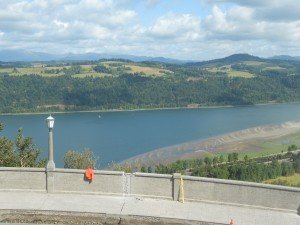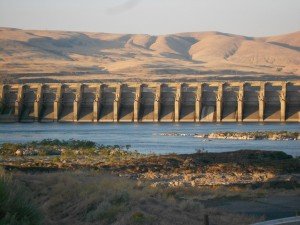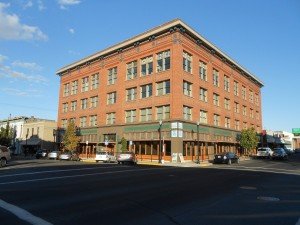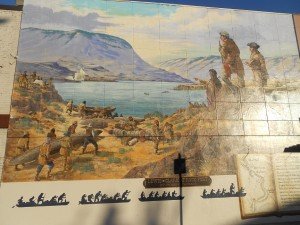The Dalles Oregon is in one of the most beautiful parts of the Columbia River Gorge Scenic Area. History tells is the The Dalles received it’s name from the early French trappers working for the North West Company. The trappers named the area “Les Dalles‘ which translates to “The Sluice” or “The Flagstone“. This may refer to the basalt rock found in and around the Columbia River.
Thank you for reading this post, don't forget to subscribe!
The Settlement of the Missionaries
Before the massive emigration along the Oregon Trail, the area which today is the city of The Dalles was inhabited by missionaries who were sent west to Christianize the native Americans of the region. The original missionary party comprised seventy people.The newly organized Methodist Episcopal Missionary Society sent Rev Jason Lee, along with his nephew Rev. Daniel Lee, lay missionary Cyrus Shepard and two assistants, P.L. Edwards and C.M. Walker and others, to Oregon to build the mission. The group set up their mission in the Willamette Valley but the area was considered to be “malarial” and Daniel Lee and others became sick. Daniel Lee ended up journeying to Hawaii to try to restore his health and the leadership of the group fell to Rev. Jason Lee.
Eventually, Jason Lee and others traveled back up the Columbia in March 1838 with the help of Indian guides to the area of The Dalles. There they were greeted by a group of Wascopam Indians. That summer the group constructed the Wascopam Mission.

Rev. Jason Lee made a return trip to the east and was very active in urging migration to the Oregon region. He may very well been the very earliest of pioneers touting the area as ideal for settlement. There is no doubt that he was successful in urging a good number of people to make the long journey.
Results of the Missionary Work
The success of the Wascopam missionaries was mixed. At first they had great attendance at their revivals and meetings with the Indians who came from a wide variety of tribes. The Dalles happened to be at a location where many different tribes gathered. After a few years the attendance decreased and eventually the church leaders in the east became dissatisfied with the number on converts versus their expenditures to support the mission. In a large way this was shortsightedness because the Native Americans had thousands of years of tradition not to mention a variety of different languages. To completely change this ingrained tradition in a matter of a few years was asking quite a lot. The missionaries working in Oregon felt largely that the eastern board really didn’t understand how particularly hard their task was.

Rev. Jason Lee was recalled in 1843 and surprisingly his replacement resigned after a very short time. Yet another reverend was sent west to Oregon and the Wascopam Mission. Eventually, in 1846 an offer was received from a Dr. Marcus Whitman, a missionary outside Walla Walla, to purchase the Wascopam Mission on behalf of the Presbyterian American board. The deal was about to be consummated when Dr. Whitman, his wife and nine others were massacred at their mission by a band of Cayuse Indians. A large group of mostly women and children were also kidnapped during the massacre. The Whitman Massacre is an interesting and tragic story and reinforces just how dangerous missionary work in the far west could be in the 1840’s.
See our article on the Whitman Mission Tragedy.
Because of the Whitman Mission tragedy, the purchase by the Presbyterians never materialized. In 1848 the mission land was taken over by the city of The Dalles, as per the recently enacted U.S. Land Claim Act, and their takeover was supported by the U.S. Supreme Court.

Oregon Trail Days and The Dalles
When the Oregon Trail pioneers reached The Dalles it was decision time. The destination for most of the pioneers was the fertile Willamette Valley to the west. Specifically, many were headed to Oregon City on the Willamette River just a few miles south of present day Portland Oregon. There were two ways to journey there from The Dalles. One was to raft down the treacherous Columbia River. This was of course before the series of dams built on the river during the twentieth century. The river looked a lot different than it does today. The second option was to travel overland to Oregon City. This option involved a trail named the Barlow Road which ran southwest from The Dalles and around the southern slope of Mount Hood. The Barlow Road had been completed in 1846.
See our Trips Into History article on the Diaries of Oregon Trail Pioneers.
The Barlow Road was a private trail set up by Sam Barlow as a toll road. Pioneers paid $5 per wagon and 10 cents per head for livestock and cattle. The Barlow Road, even though it cost money to travel on was the preferred way by many, not all however, to make the final leg of the 2,000 mile Oregon Trail journey. While taking the Columbia River route didn’t mean sure disaster, there were enough accidents and fatalities to make the Barlow Road a solid alternative.
Visiting The Dalles
One of the best things about driving to The Dalles from Portland Oregon is that you have the opportunity to travel along the banks of the Columbia River on the Columbia River Scenic Highway. The Dalles is located about 85 miles east of Portland. On your way to The Dalles you’ll pass the Bonneville Dam which has a fantastic visitor center that showcases everything about the Columbia River including an underwater viewing of their Fish Ladder. Also along the way are several beautiful waterfall sites such as the Multnomah Falls and the Wahkeena Falls along the Columbia River Scenic Highway.
When you visit The Dalles, you also want to see The Dalles Dam which is one of the several dams now along the Columbia River.
(Photos from author’s private collection)
